当前位置:网站首页>Deep learning ----- using NN, CNN, RNN neural network to realize MNIST data set processing
Deep learning ----- using NN, CNN, RNN neural network to realize MNIST data set processing
2022-07-03 23:23:00 【Xiaofeilong programmer】
1. use NN The neural network completes MNIST Dataset processing
# use NN The neural network completes MNIST Dataset processing
# 1、 Guide pack
import tensorflow as tf
import numpy as np
import matplotlib.pyplot as plt
from tensorflow.examples.tutorials.mnist import input_data
# 2、 load mnist Data sets
mnist=input_data.read_data_sets('mnist_data',one_hot=True)
x_data=mnist.train.images
y_data=mnist.train.labels
# 3、 Set up a place holder
x=tf.placeholder(tf.float32,shape=[None,28*28])
y=tf.placeholder(tf.float32,shape=[None,10])
# 4、 Set offset weights
w1=tf.Variable(tf.random_normal([28*28,200]))
b1=tf.Variable(tf.random_normal([200]))
w2=tf.Variable(tf.random_normal([200,100]))
b2=tf.Variable(tf.random_normal([100]))
w3=tf.Variable(tf.random_normal([100,10]))
b3=tf.Variable(tf.random_normal([10]))
# 5、 Set the prediction model
a1=tf.tanh(tf.matmul(x,w1)+b1)
a2=tf.tanh(tf.matmul(a1,w2)+b2)
a3=tf.matmul(a2,w3)+b3
# 6、 Cost function
cost=tf.reduce_mean(tf.nn.softmax_cross_entropy_with_logits(logits=a3,labels=y))
# 7、 Small batch gradient descent
# optimiter=tf.train.AdamOptimizer(learning_rate=0.001).minimize(cost)
dz3=a3-y
dw3=tf.matmul(tf.transpose(a2),dz3)/tf.cast(tf.shape(a2)[0],dtype=tf.float32)
db3=tf.reduce_mean(dz3,axis=0)
da2=tf.matmul(dz3,tf.transpose(w3))
dz2=da2*a2*(1-a2)
dw2=tf.matmul(tf.transpose(a1),dz2)/tf.cast(tf.shape(a1)[0],dtype=tf.float32)
db2=tf.reduce_mean(dz2,axis=0)
da1=tf.matmul(dz2,tf.transpose(w2))
dz1=da1*a1*(1-a1)
dw1=tf.matmul(tf.transpose(x),dz1)/tf.cast(tf.shape(x)[0],dtype=tf.float32)
db1=tf.reduce_mean(dz1,axis=0)
learning=0.01
optimiter=[
tf.assign(w3,w3-learning*dw3),
tf.assign(w2,w2-learning*dw2),
tf.assign(w1,w1-learning*dw1),
tf.assign(b3,b3-learning*db3),
tf.assign(b2,b2-learning*db2),
tf.assign(b1,b1-learning*db1),
]
# correct=tf.nn.in_top_k(a3,y,1)
# accuracy=tf.reduce_mean(tf.cast(correct,tf.float32))
y_true=tf.argmax(y,1)
y_predict=tf.argmax(a3,1)
accuracy=tf.reduce_mean(tf.cast(tf.equal(y_true,y_predict),tf.float32))
# 8、 Create a session
sess=tf.Session()
sess.run(tf.global_variables_initializer())
# 9、 Cycle output accuracy and cost
batch_size=100
train_count=20
ls=[]
for epo in range(train_count):
avg_cost=0
total_batch=mnist.train.num_examples//batch_size
for i in range(total_batch):
batch_x,batch_y=mnist.train.next_batch(batch_size)
cost_val,_,acc=sess.run([cost,optimiter,accuracy],feed_dict={
x:batch_x,y:batch_y})
avg_cost+=cost_val/total_batch
ls.append(avg_cost)
print('epo:',epo,' On behalf of value :',avg_cost)
acc_v=sess.run(accuracy,feed_dict={
x:mnist.test.images,y:mnist.test.labels})
print(acc_v)
# 10、 Draw the cost function diagram
plt.plot(ls)
plt.show()
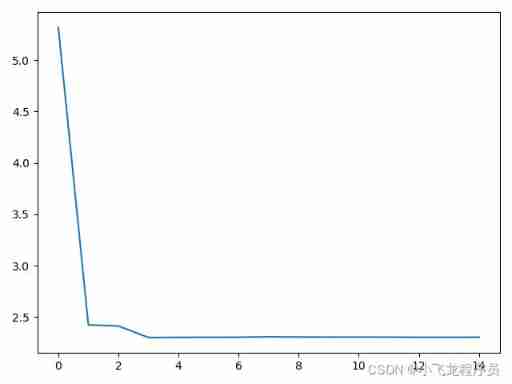
2. Complete with convolution neural network mnist Dataset processing
Method 1 :
# 1. Use convolution neural network to complete mnist Dataset processing
# 1、 Guide pack
import tensorflow as tf
import numpy as np
import matplotlib.pyplot as plt
from tensorflow.examples.tutorials.mnist import input_data
# 2、 Load data
mnist=input_data.read_data_sets('mnist_data',one_hot=True)
x_data=mnist.train.images
y_data=mnist.train.labels
# 3、 Set super parameters
width=28
height=28
# 4、 Define convolution placeholders
x=tf.placeholder(tf.float32,shape=[None,height*width])
y=tf.placeholder(tf.float32,shape=[None,10])
x_img=tf.reshape(x,[-1,width,height,1])
# 5、 Set the weight of the first layer , Convolution , Pooling layer
w1=tf.Variable(tf.random_normal([3,3,1,16]))
l1=tf.nn.conv2d(x_img,w1,strides=[1,1,1,1],padding='SAME')
l1=tf.nn.relu(l1)
l1=tf.nn.max_pool(l1,ksize=[1,2,2,1],strides=[1,2,2,1],padding='VALID')
# 6、 Set the second convolution , The weight , Pooling layer
w2=tf.Variable(tf.random_normal([3,3,16,32]))
l2=tf.nn.conv2d(l1,w2,strides=[1,1,1,1],padding='SAME')
l2=tf.nn.relu(l2)
l2=tf.nn.max_pool(l2,ksize=[1,2,2,1],strides=[1,2,2,1],padding='VALID')
dim=l2.get_shape()[1].value*l2.get_shape()[2].value*l2.get_shape()[3].value
l2_flat=tf.reshape(l2,[-1,dim])
# 7、 Set up the full connection layer
w3=tf.Variable(tf.random_normal([dim,100],stddev=0.01))
b3=tf.Variable(tf.random_normal([100]))
logit1=tf.matmul(l2_flat,w3)+b3
w4=tf.Variable(tf.random_normal([100,10],stddev=0.01))
b4=tf.Variable(tf.random_normal([10]))
logit2=tf.matmul(logit1,w4)+b4
# 8、 Set the cost function , Set the precision function
cost=tf.reduce_mean(tf.nn.softmax_cross_entropy_with_logits(logits=logit2,labels=y))
optimiter=tf.train.AdamOptimizer(learning_rate=0.001).minimize(cost)
y_true=tf.argmax(y,1)
y_predict=tf.argmax(logit2,1)
accuracy=tf.reduce_mean(tf.cast(tf.equal(y_true,y_predict),tf.float32))
# 9、 Small batch gradient descent training model
sess=tf.Session()
sess.run(tf.global_variables_initializer())
batch_size=100
train_count=15
ls=[]
for epo in range(train_count):
avg_cost=0
total_batch=mnist.train.num_examples//batch_size
for i in range(total_batch):
batch_x,batch_y=mnist.train.next_batch(batch_size)
cost_val,_,acc=sess.run([cost,optimiter,accuracy],feed_dict={
x:batch_x,y:batch_y})
avg_cost+=cost_val/total_batch
ls.append(avg_cost)
print('epo:',epo,' On behalf of value :',avg_cost)
# 10、 Output accuracy and cost
acc_v=sess.run(accuracy,feed_dict={
x:mnist.test.images,y:mnist.test.labels})
print(acc_v)
plt.plot(ls)
plt.show()
Method 2 :
# 1. Use convolution neural network to complete mnist Dataset processing (40 branch )
# 1、 Guide pack
import tensorflow as tf
import numpy as np
import matplotlib.pyplot as plt
from tensorflow.examples.tutorials.mnist import input_data
# 2、 Load data
mnist=input_data.read_data_sets('mnist_data')
x_data=mnist.train.images
y_data=mnist.train.labels
# 3、 Set super parameters
width=28
height=28
# 4、 Define convolution placeholders
x=tf.placeholder(tf.float32,shape=[None,height*width])
y=tf.placeholder(tf.int32,shape=[None])
x_img=tf.reshape(x,[-1,width,height,1])
# 5、 Set the weight of the first layer , Convolution , Pooling layer
w1=tf.Variable(tf.random_normal([3,3,1,16]))
l1=tf.nn.conv2d(x_img,w1,strides=[1,1,1,1],padding='SAME')
l1=tf.nn.relu(l1)
l1=tf.nn.max_pool(l1,ksize=[1,2,2,1],strides=[1,2,2,1],padding='VALID')
# 6、 Set the second convolution , The weight , Pooling layer
w2=tf.Variable(tf.random_normal([3,3,16,32]))
l2=tf.nn.conv2d(l1,w2,strides=[1,1,1,1],padding='SAME')
l2=tf.nn.relu(l2)
l2=tf.nn.max_pool(l2,ksize=[1,2,2,1],strides=[1,2,2,1],padding='VALID')
dim=l2.get_shape()[1].value*l2.get_shape()[2].value*l2.get_shape()[3].value
l2_flat=tf.reshape(l2,[-1,dim])
# 7、 Set up the full connection layer
w3=tf.Variable(tf.random_normal([dim,100],stddev=0.01))
b3=tf.Variable(tf.random_normal([100]))
logit1=tf.matmul(l2_flat,w3)+b3
w4=tf.Variable(tf.random_normal([100,10],stddev=0.01))
b4=tf.Variable(tf.random_normal([10]))
logit2=tf.matmul(logit1,w4)+b4
# 8、 Set the cost function , Set the precision function
cost=tf.reduce_mean(tf.nn.sparse_softmax_cross_entropy_with_logits(logits=logit2,labels=y))
optimiter=tf.train.AdamOptimizer(learning_rate=0.001).minimize(cost)
correct=tf.nn.in_top_k(logit2,y,1)# The prediction results of each sample are in the front of k Does the largest number contain targets Labels in forecasting
accuracy=tf.reduce_mean(tf.cast(correct,tf.float32))
# y_true=tf.argmax(y,1)
# y_predict=tf.argmax(logit2,1)
# accuracy=tf.reduce_mean(tf.cast(tf.equal(y_true,y_predict),tf.float32))
# 9、 Small batch gradient descent training model
sess=tf.Session()
sess.run(tf.global_variables_initializer())
batch_size=100
train_count=15
ls=[]
for epo in range(train_count):
avg_cost=0
total_batch=mnist.train.num_examples//batch_size
for i in range(total_batch):
batch_x,batch_y=mnist.train.next_batch(batch_size)
cost_val,_,acc=sess.run([cost,optimiter,accuracy],feed_dict={
x:batch_x,y:batch_y})
avg_cost+=cost_val/total_batch
ls.append(avg_cost)
print('epo:',epo,' On behalf of value :',avg_cost)
# 10、 Output accuracy and cost
acc_v=sess.run(accuracy,feed_dict={
x:mnist.test.images,y:mnist.test.labels})
print(acc_v)
plt.plot(ls)
plt.show()
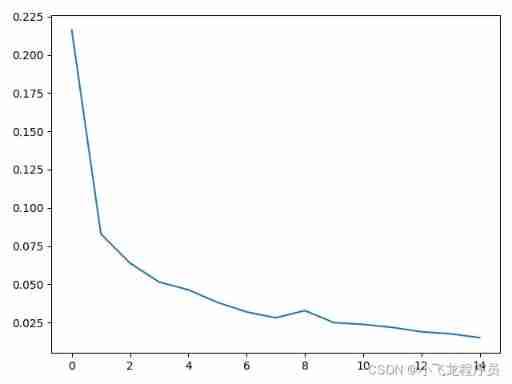
3. Complete with cyclic neural network mnist Dataset processing
Method 1 :
# 2. The processing cycle neural network is completed mnist Dataset processing (30 branch )
# 1、 Guide pack
import tensorflow as tf
from tensorflow.contrib.layers import fully_connected
from tensorflow.contrib.seq2seq import sequence_loss
from tensorflow.examples.tutorials.mnist import input_data
import matplotlib.pyplot as plt
# 2、 Load data
mnist=input_data.read_data_sets('mnist_data')
x_data=mnist.train.images
y_data=mnist.train.labels
# 3、 Set super parameters
n_input=28
steps=28
hidden_size=10
output_layer=10
# 4、 Place holder
x=tf.placeholder(tf.float32,shape=[None,steps,n_input])
y=tf.placeholder(tf.int32,shape=[None])
# 5、 Set up basic circulating nerve unit
# cell=tf.nn.rnn_cell.BasicRNNCell(num_units=hidden_size)
#cell=tf.nn.rnn_cell.BasicLSTMCell(num_units=hidden_size)
lstm_cell=[tf.nn.rnn_cell.LSTMCell(num_units=hidden_size) for layer in range(n_layers)]#10 Is the number of hidden layers
multi_cell=tf.nn.rnn_cell.MultiRNNCell(lstm_cell)
# 6、 Set up dynamic recurrent neural network
outputs,states=tf.nn.dynamic_rnn(multi_cell,x,dtype=tf.float32)
# 7、 Fully connected layer
logit=fully_connected(outputs[:,-1],output_layer,activation_fn=None)
# Cost function and optimizer
cost=tf.reduce_mean(tf.nn.sparse_softmax_cross_entropy_with_logits(logits=logit,labels=y))
optimiter=tf.train.AdamOptimizer(learning_rate=0.01).minimize(cost)
# 8、 Setting accuracy
correct=tf.nn.in_top_k(logit,y,1)
accuracy=tf.reduce_mean(tf.cast(correct,tf.float32))
# 9、 Small batch gradient descent training model
batch_size=100
train_count=10
ls=[]
with tf.Session() as sess:
sess.run(tf.global_variables_initializer())
for epo in range(train_count):
avg_cost=0
total_batch=mnist.train.num_examples//batch_size
for i in range(total_batch):
batch_x,batch_y=mnist.train.next_batch(batch_size)
batch_x=batch_x.reshape([-1,28,28])
cost_val,_,acc=sess.run([cost,optimiter,accuracy],feed_dict={
x:batch_x,y:batch_y})
avg_cost+=cost_val/total_batch
ls.append(avg_cost)
print('epo:',epo,' On behalf of value :',avg_cost,acc)
acc_train=accuracy.eval(feed_dict={
x:batch_x,y:batch_y})
print('acc_train',acc_train)
acc_test=sess.run(accuracy,feed_dict={
x:mnist.test.images.reshape([-1,28,28]),y:mnist.test.labels})
print('acc_test',acc_test)
# 10. Output accuracy , Cost function
plt.plot(ls)
plt.show()
Method 2 :
import tensorflow as tf
from tensorflow.contrib.layers import fully_connected
from tensorflow.contrib.seq2seq import sequence_loss
import numpy as np
from tensorflow.examples.tutorials.mnist import input_data
import random
# stay tensorflow in , Using a recurrent neural network, multilayer LSTM How to achieve mnist Handwritten digit recognition .
# 1. Reading data (8 branch )
mnist=input_data.read_data_sets('mnist_data',one_hot=True)
x_data=mnist.train.images
y_data=mnist.train.labels
# 2. Define all parameters (8 branch )
n_inputs=28
n_steps=28
hidden_size=10
layers=4
n_outputs=10
# 3. Set up a place holder (8 branch )
x=tf.placeholder(tf.float32,shape=[None,n_steps,n_inputs])
y=tf.placeholder(tf.int32,shape=[None,None])
# 4. establish LSTMCell(8 branch )
cell=[tf.nn.rnn_cell.LSTMCell(num_units=hidden_size) for layer in range(layers)]
# 5. Stack multiple layers LSTMCell(8 branch )
multi_cell=tf.nn.rnn_cell.MultiRNNCell(cell)
outpus,states=tf.nn.dynamic_rnn(multi_cell,x,dtype=tf.float32)
# 6. Establish a full connection layer (8 branch )
logits=fully_connected(outpus[:,-1],n_outputs,activation_fn=None)
# 7. Calculate the cost or loss function (8 branch )
cost=tf.reduce_mean(tf.nn.softmax_cross_entropy_with_logits(logits=logits,labels=y))
optimiter=tf.train.AdamOptimizer(learning_rate=0.01).minimize(cost)
# 8. Set the accuracy model (8 branch )
y_true=tf.argmax(y,1)
y_predict=tf.argmax(logits,1)
accuracy=tf.reduce_mean(tf.cast(tf.equal(y_true,y_predict),tf.float32))
# correct=tf.nn.in_top_k(logits,y,1)
# accuracy=tf.reduce_mean(tf.cast(correct,tf.float32))
# 9. Use the training set data to train iterations 5 Time (8 branch )
train_count=5
batch_size=100
with tf.Session() as sess:
sess.run(tf.global_variables_initializer())
for epo in range(train_count):
avg_cost=0
total_batch=mnist.train.num_examples//batch_size
# 10. Training in batches , Each batch 100 Training samples (8 branch )
for i in range(batch_size):
batch_x,batch_y=mnist.train.next_batch(batch_size)
batch_x=batch_x.reshape([-1,n_steps,n_inputs])
# 11. The accuracy of the output training set (6 branch )
cost_val,_,acc=sess.run([cost,optimiter,accuracy],feed_dict={
x:batch_x,y:batch_y})
avg_cost+=cost_val/total_batch
print(epo,avg_cost,acc)
acc_train=accuracy.eval(feed_dict={
x:batch_x,y:batch_y})
print(acc_train)
# 12. The accuracy of the output test set (6 branch )
acc_test = accuracy.eval(feed_dict={
x: batch_x, y: batch_y})
print(acc_test)
# 13. Take a sample from the test set for verification (8 branch )
r=random.randint(0,mnist.test.num_examples-1)
label = sess.run(tf.argmax(mnist.test.labels[r:r + 1], axis=2))
predict=sess.run(tf.argmax(logits,2),feed_dict={
x:mnist.test.images[r:r+1]})
print(label,predict)
sess=tf.Session()
sess.run(tf.global_variables_initializer())
for epo in range(train_count):
avg_cost=0
total_batch=mnist.train.num_examples//batch_size
for i in range(batch_size):
batch_x,batch_y=mnist.train.next_batch(batch_size)
batch_x=batch_x.reshape([-1,n_steps,n_inputs])
cost_val,_=sess.run([cost,optimiter],feed_dict={
x:batch_x,y:batch_y})
avg_cost+=cost_val/total_batch
acc_train = sess.run(accuracy,feed_dict={
x: batch_x, y: batch_y})
print(epo,avg_cost,'acc_train',acc_train)
acc_test=sess.run(accuracy,feed_dict={
x:mnist.test.images.reshape([-1,n_steps,n_inputs]),y:mnist.test.labels})
print('acc_test',acc_test)
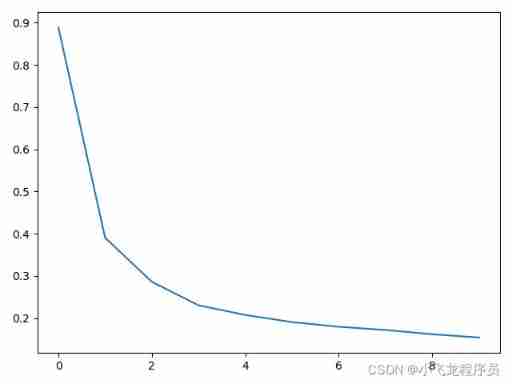
Be careful : Method 1 and method 2 are only modified in terms of parameters , The two methods have the same effect .
** The difference between the two methods :** Only the parameters have been adjusted
Method 1 :
mnist=input_data.read_data_sets('mnist_data')
y=tf.placeholder(tf.int32,shape=[None,None])
cost=tf.reduce_mean(tf.nn.sparse_softmax_cross_entropy_with_logits(logits=logit,labels=y))
correct=tf.nn.in_top_k(logit,y,1)
accuracy=tf.reduce_mean(tf.cast(correct,tf.float32))
Method 2 :
mnist=input_data.read_data_sets('mnist_data',one_hot=True)
y=tf.placeholder(tf.int32,shape=[None,None])
y_true=tf.argmax(y,1)
y_predict=tf.argmax(logits,1)
accuracy=tf.reduce_mean(tf.cast(tf.equal(y_true,y_predict),tf.float32))
4. summary
4.1 Two methods of small batch training :
Method 1 :
train_count=5
batch_size=100
with tf.Session() as sess:
sess.run(tf.global_variables_initializer())
for epo in range(train_count):
avg_cost=0
total_batch=mnist.train.num_examples//batch_size
for i in range(batch_size):
batch_x,batch_y=mnist.train.next_batch(batch_size)
batch_x=batch_x.reshape([-1,n_steps,n_inputs])
cost_val,_,acc=sess.run([cost,optimiter,accuracy],feed_dict={
x:batch_x,y:batch_y})
avg_cost+=cost_val/total_batch
print(epo,avg_cost,acc)
acc_train=accuracy.eval(feed_dict={
x:batch_x,y:batch_y})
print(acc_train)
acc_test = accuracy.eval(feed_dict={
x: batch_x, y: batch_y})
print(acc_test)
Method 2 :
sess=tf.Session()
sess.run(tf.global_variables_initializer())
for epo in range(train_count):
avg_cost=0
total_batch=mnist.train.num_examples//batch_size
for i in range(batch_size):
batch_x,batch_y=mnist.train.next_batch(batch_size)
batch_x=batch_x.reshape([-1,n_steps,n_inputs])
cost_val,_=sess.run([cost,optimiter],feed_dict={
x:batch_x,y:batch_y})
avg_cost+=cost_val/total_batch
acc_train = sess.run(accuracy,feed_dict={
x: batch_x, y: batch_y})
print(epo,avg_cost,'acc_train',acc_train)
acc_test=sess.run(accuracy,feed_dict={
x:mnist.test.images.reshape([-1,n_steps,n_inputs]),y:mnist.test.labels})
print('acc_test',acc_test)
4.2 Randomly select a sample from the test set for verification
Randomly select a sample from the test set for verification
r=random.randint(0,mnist.test.num_examples-1)
label = sess.run(tf.argmax(mnist.test.labels[r:r + 1], axis=2))
predict=sess.run(tf.argmax(logits,2),feed_dict={
x:mnist.test.images[r:r+1]})
print(label,predict)
边栏推荐
- [automation operation and maintenance novice village] flask-2 certification
- Scratch uses runner Py run or debug crawler
- Shell script three swordsman awk
- D25:sequence search (sequence search, translation + problem solving)
- ThreadLocal function, scene and principle
- Minimum commission for stock account opening. Stock account opening is free. Is online account opening safe
- [issue 16] golang's one-year experience in developing Purdue Technology
- What are the securities companies with the lowest Commission for stock account opening? Would you recommend it? Is it safe to open an account on your mobile phone
- D29:post Office (post office, translation)
- Is the controller a single instance or multiple instances? How to ensure the safety of concurrency
猜你喜欢
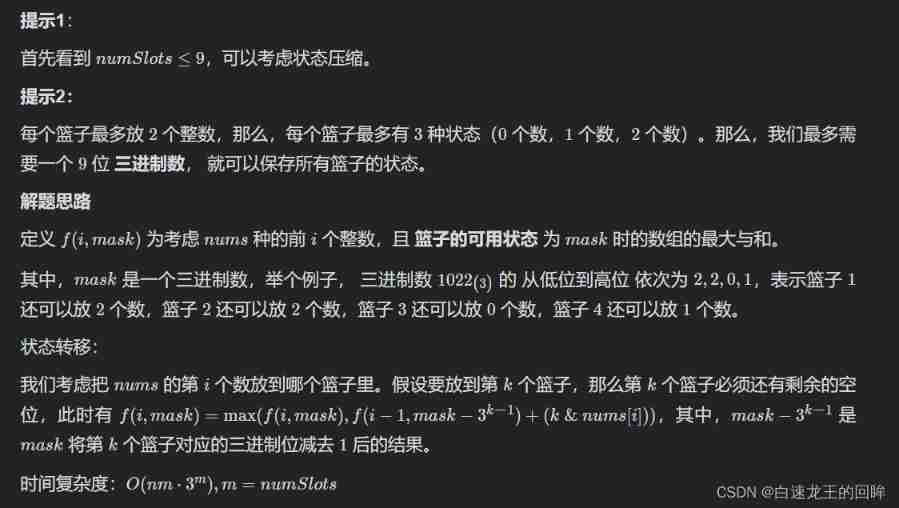
Leetcode week 4: maximum sum of arrays (shape pressing DP bit operation)
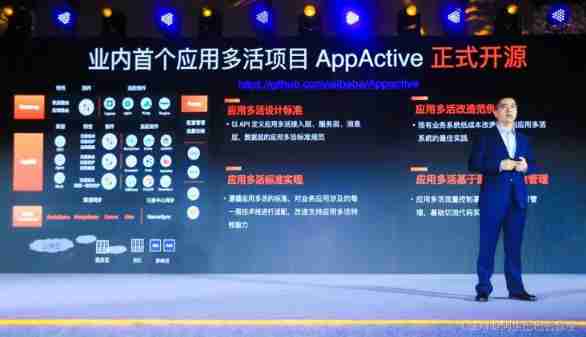
How can enterprises and developers take advantage of the explosion of cloud native landing?

Design of logic level conversion in high speed circuit

The first game of the new year, many bug awards submitted
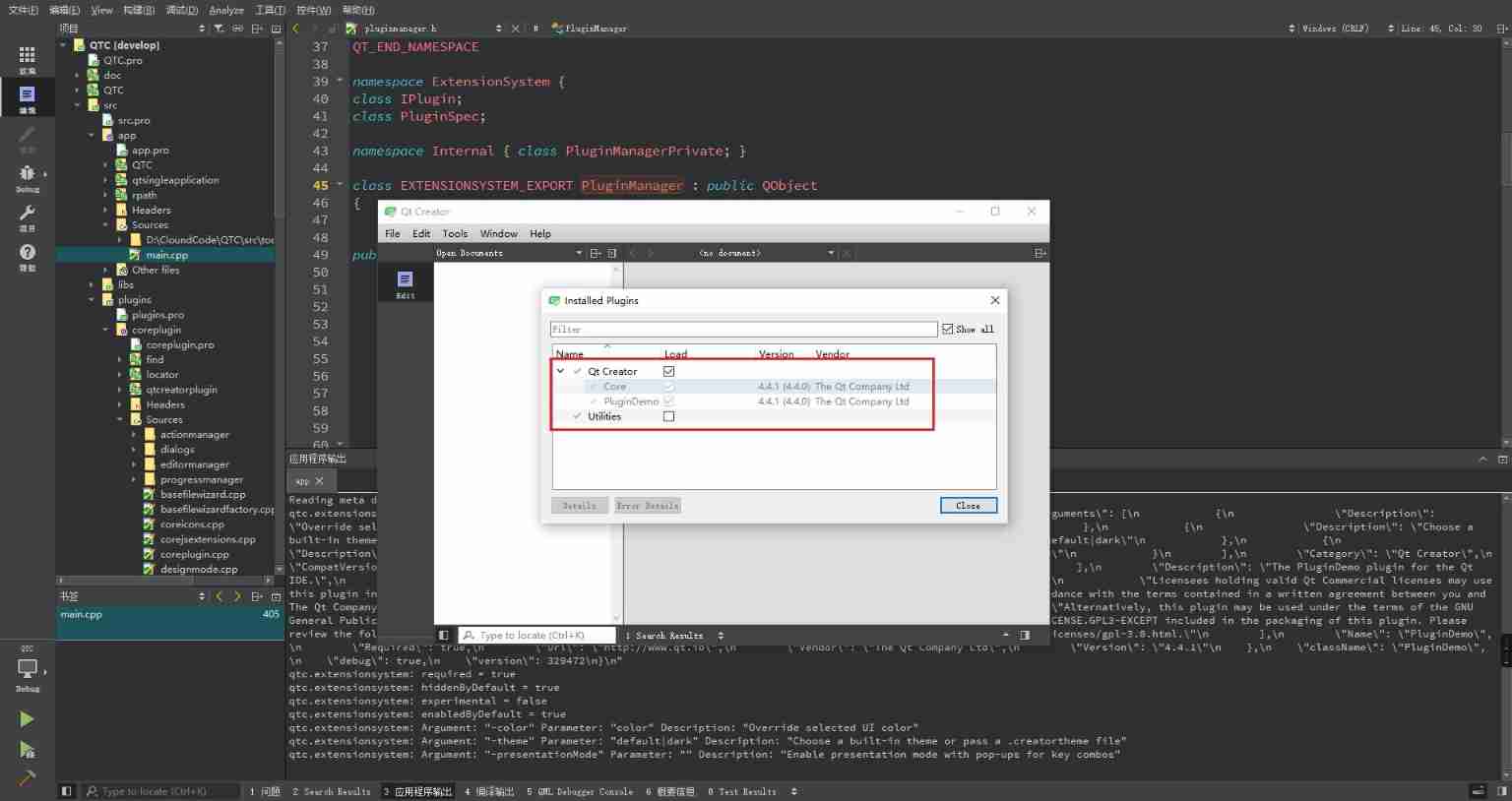
QT creator source code learning note 05, how does the menu bar realize plug-in?

2022 Guangdong Provincial Safety Officer a certificate third batch (main person in charge) simulated examination and Guangdong Provincial Safety Officer a certificate third batch (main person in charg

How the computer flushes the local DNS cache

Summary of fluent systemchrome
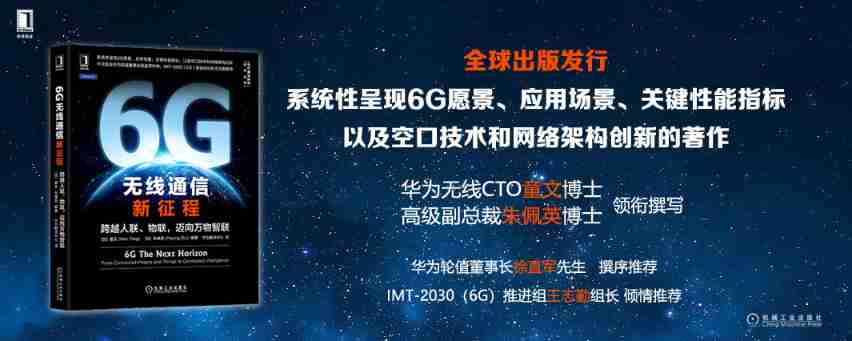
In 2022, 6G development has indeed warmed up
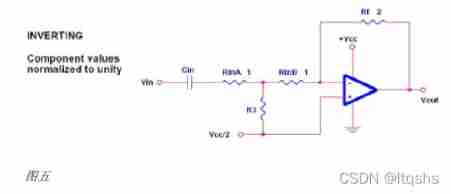
The difference between single power amplifier and dual power amplifier
随机推荐
How to make icons easily
finalize finalization finally final
"Learning notes" recursive & recursive
2/14 (regular expression, sed streaming editor)
Fluent learning (4) listview
. Net ADO splicing SQL statement with parameters
Unity shader visualizer shader graph
The 2022 global software R & D technology conference was released, and world-class masters such as Turing prize winners attended
A treasure open source software, cross platform terminal artifact tabby
EPF: a fuzzy testing framework for network protocols based on evolution, protocol awareness and coverage guidance
Summary of fluent systemchrome
Actual combat | use composite material 3 in application
Arc135 partial solution
[automation operation and maintenance novice village] flask-2 certification
Maxwell equation and Euler formula - link
Opengauss database log management guide
33 restrict the input of qlineedit control (verifier)
Gorilla/mux framework (RK boot): add tracing Middleware
[Android reverse] use the DB browser to view and modify the SQLite database (copy the database file from the Android application data directory | use the DB browser tool to view the data block file)
Esp-idf turns off serial port log output.